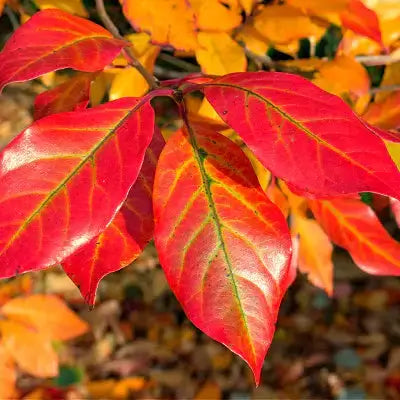The Beauty of the Tupelo Tree
The Tupelo Tree has gained the reputation of being an interestingly shaped, beautifully colored tree. There are ten species of these trees, five native to North America and the others native to south and east Asia. People choose this tree to add beautiful foliage to their landscape.
The Tupelo Tree is sometimes known as the Pioneer's Toothbrush due to the small, brittle twigs that can break off with a bundle of woody fibers on the end. These twigs were often used to clean the teeth in older days. Another name associated with this tree is the Beetlebung. This name came from the pioneers using hardwood to create mallets. The mallets were then used to produce barrels containing whale oil which were called beetles.
Today, the Tupelo Tree is used as a shade tree and prized for its beautiful foliage. The tree turns a glossy dark green during the summer and in fall and displays excellent colors. The leaves in fall will turn bright red, orange, yellow, and scarlet, and you may even see a hint of purple. These unique displays of colors can all appear on the same branch.
Growing your Tupelo Tree
The Black Tupelo, also called Black Gum, Sour Gum, or Pepperidge, grows in moist woody areas from North America south to the Coast and west to Oklahoma. The trees can grow to 60 feet and have been seen as high as 100 feet.
The Swamp Tupelo, also known as Cotton Gum, or Swamp Gum, grows in the swamps of the southeast. They stretch north to southern Illinois from the Gulf of Mexico and the Mississippi River Valley. This variety typically reaches from 80 to 100 feet in height.
The tree grows best in USDA Hardiness Zones 4-9. It requires full sun and, once established, should receive occasionally watering unless in extreme heat where it will need water more regularly. The average height for a mature tree is 30-50 feet, although; they have been recorded to reach greater heights. Its landscape uses have been listed as; Woodland Garden, Very Wet Areas, Fire scaping/Fire Wise, Coastal Exposure, and Specimen.
When planting the Tupelo, it is suggested to provide it with thick, acidic, moist, and well-drained soil. During the first few growing seasons, make sure to water regularly and deeply to establish its roots. Once the tree has established itself, it will prefer evenly moist soil but will tolerate dry spells and heavy moisture. In the spring, you should apply fertilizer and prune for desired shape and structure in the winter.


